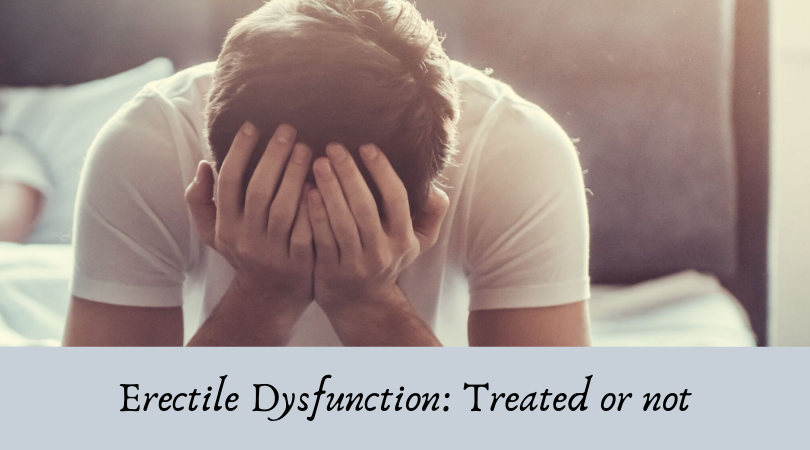Erectile Dysfunction
Erectile dysfunction is a pathology of sexual male function, in which there is an inability to achieve or maintain an erection sufficient for sexual intercourse. For diagnosis establishment, this pathology should remain for at least 3 months. This type of sexual disorder is one of the most common in the world. 52% of men aged 40–70 years suffer from erecile dysfunction. 20% of men over 30 have difficulty with an erection. According to Sandel Trust Pharmacy, ED is 15–20% more common among smokers than among non-smokers. Almost every man throughout his life at least once had a single symptom of erectile dysfunction.
Triggers of erectile dysfunction
All men need to remember that there are triggering risk factors for erectile dysfunction. These include:
- increased weight;
- age;
- smoking and alcohol abuse;
- use of any drugs;
- frequent depressive states;
- inactivity lifestyle;
- metabolic syndrome and impaired lipid metabolism;
- expressed vitamin deficiencies;
- various adverse environmental factors (radiation, various types of radiation, etc.).
There are 3 main causes types of erectile dysfunction.
- Psychogenic – when erectile dysfunction is associated with anxiety, any specific situations, mental disorders, etc.
- Organic – when violations of sexual function develop due to some structural penile changes;
- Combined.
There may be distinguished the following causes of erectile dysfunction:
- vascular causes (increased blood pressure, atherosclerosis, diabetes mellitus, venous insufficiency, surgical interventions, etc.);
- neurological causes (strokes, multiple sclerosis, various neuropathies, tumors, injuries, etc.);
- endocrine causes (low testosterone levels, increased prolactin, thyroid dysfunction, etc.);
- structural causes (penile injuries, congenital malformations, Peyronie’s disease, curvature, priapism, etc.).
- medicinal – when erectile function develops while taking some medications (psychotropic, antidepressants, antihypertensives, etc.).
Diagnostics
When diagnosing erectile dysfunction, it is very important to determine its severity. It is also necessary to find out the cause of these disorders, to establish the disease that caused erectile dysfunction. It is necessary to determine the presence or absence of other types of sexual disorders (decreased sex drive, ejaculation disorders and orgasm).
Psychogenic dysfunction usually occurs suddenly. At the same time, normal morning erections remain. When psychogenic erectile dysfunction is often caused by problems in relationships with a partner.
Organic erectile dysfunction arise gradually, morning erections are reduced or completely absent. In this case, as a rule, a good sexual attraction is kept. The quality of sexual intercourse is almost always affected, with any partners and in various situations. If you experience the first alarming symptoms – lack of sexual desire and poor erection – you need to contact an andrologist.
Treatment
Before starting therapy, all patients are recommended to exclude risk factors/triggers. The normalization of lifestyle and sexual activity is important. An important step is to resolve the issue to cancel or replace medications that can adversely affect an erection. Neurological and cardiological problems are eliminated through an appointment with a psychotherapist. Doctors recommend that such patients come for a consultation with a sexologist and psychologist together with a partner – this will contribute to understand each other, relax and trust.
Depending on the cause of the disease, there distinsguished treatment methods. If a cause of erectile dysfunction is identified, it is necessary to eliminate it.
Stages of conservative ED treatment
At the first stage, drugs are used to stimulate an erection (in particular, PDE-5 inhibitors). Viagra, Cialis, Levitra, Stendra belong to the PDE-5, the first-line therapy of erectile dysfunction. In the presence of androgen deficiency, drugs that increase the concentration of testosterone are prescribed. For androgen replacement therapy, injectable and transdermal forms of testosterone are used. The drug, dose, mode of administration and duration of the course are selected individually. Take any medications of these groups is necessary only as indicated by a healthcare professional. Otherwise, severe side effects are possible to appear. In the case of psychogenic disorders, an important step in the first line of treatment is psychosexotherapy.
If it is impossible to prescribe or the patient does not want to use Viagra, local negative pressure therapy is recommended as a first-line help. The essence of this method is that the penis is placed in a special flask, where negative pressure is created using a vacuum pump. This leads to an increase in blood flow to the penis, which stimulates an erection. To maintain an erection, a special compressive ring is imposed on the penis base, limiting the venous outflow.
The second stage of treatment involves intracavernous or intraurethral administration of vasoactive drugs. It is used in the absence of the effect of the prescribed drugs. Efficiency and quality of erection are quite high. This treatment method has contraindications and side effects.
Surgical erectile dysfunction treatment
If conservative therapy is ineffective, surgical treatment of erectile dysfunction is used. Patients with lesions of the penile arteries supplying the pelvic organs are recommended surgical procedures on the vessels. If all other methods of treating erectile dysfunction fail, if the patient insists on a radical solution to his problem, phalloendoprosthetics with semi-rigid prostheses or hydraulic implants that simulate an erection are recommended. The number of satisfied patients after penile prosthetics exceeds 80%.





